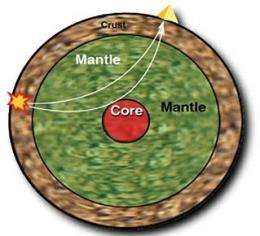Improved seismology tools can detect and locate low-yield nuclear explosions

Lawrence Livermore National Laboratory is leading a joint project with Los Alamos and Sandia national laboratories, as well as the Air Force Technical Applications Center (AFTAC) and Quantum Technology Sciences, Inc., to improve the accuracy of regional seismic travel time (RSTT) predictions to detect and locate low-yield nuclear explosions.
While seismic research is most often associated with earthquakes, seismic technology is also the primary means to detect, locate and identify underground nuclear explosions.
Underground nuclear testing plays a pivotal role in the persistent and well-documented efforts by states to develop and improve explosive nuclear devices.
Nuclear tests are no longer frequent. However, there are 30- 40 earthquakes of magnitude 4 and greater every day — about 10,000 per year. A magnitude 4 earthquake releases energy on the order of a one-kiloton nuclear explosion. Identification and location of the rare, and possibly covert nuclear test, within the cacophony of natural and man-made background seismic activity, is a major national security scientific challenge that NNSA and its labs are in a unique position to meet.
Scientists study the seismic traces (waveform records of the surface ground motion as a function of time, acquired by digital equipment) from networks of seismometers all over the world.
The long-term effort to improve seismic event location accuracy significantly increases the accuracy of RSTT predictions. The newly developed RSTT model embodies three-dimensional variations in seismic wave speed in the earth's crust as well as lateral variability in seismic-wave speed in the earth's upper mantle.
The RSTT model increases the location accuracy of small events, previously undetectable at great distance. Tests across Eurasia show that the RSTT model improves median location accuracy by 46 percent (from 17.3 km using a standard one-dimensional model to 9.3 km using the RSTT model).
NNSA efforts have reduced regional location error for small yield events to a level that, until recently, was only achieved for large, globally recorded events.
This NNSA-funded effort has resulted in a significant improvement in regional seismic event location accuracy and further improvement can be expected as complementary research projects mature, thus improving our ability to detect lower yield events.
Provided by Lawrence Livermore National Laboratory















